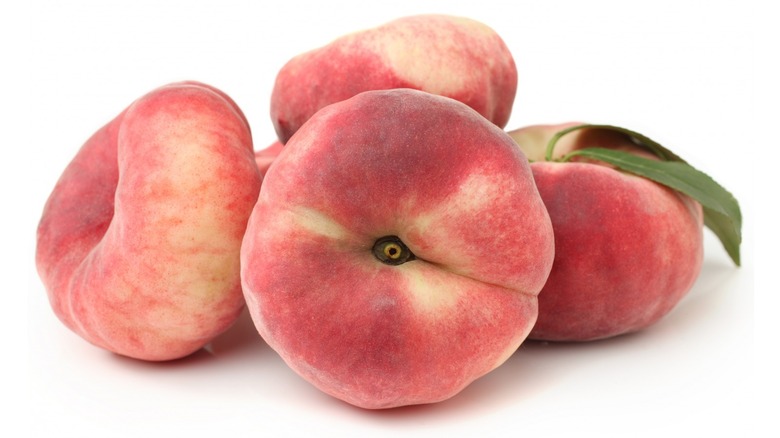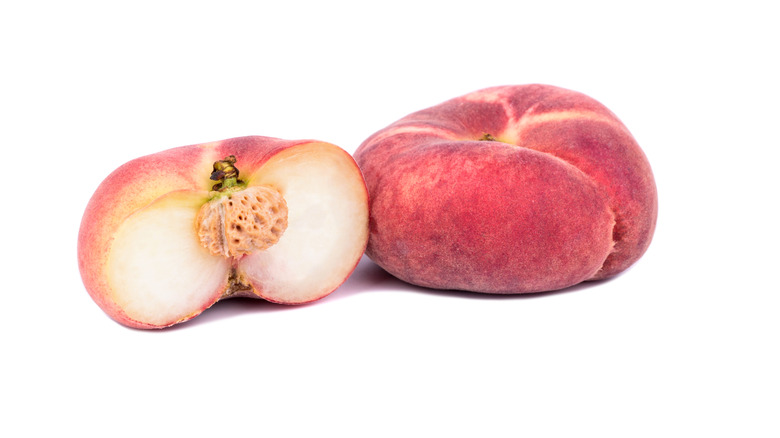How Donut Peaches Differ From Their Plump Counterparts
There's something about a perfectly ripe peach that seems to sum up the essence of summer: its fragrant succulence and fuzzy juiciness evoke the warmth of a casually carefree existence. These days, that peach satisfaction comes in more varieties than ever, and if you've been paying attention, you'll have caught a glimpse of the "donut" variety as well: flat disks of stone fruit, they're like the snacking variety of the more familiar peach face that you already know and love to eat.
While the donut peach may seem like an oddity for those accustomed to its spherical counterparts, these peaches weren't planted by aliens — and they're not even hybrids. They're a kind of peach native to China called pan tao that was first introduced to the U.S. shortly after the Civil War. It only started picking up steam in the '60s and '70s when Rutgers professor Dr. Fred Hough and his colleague Jerry Frecon developed hardier varieties that bore bigger fruit. In the '80s, they further developed what they called the "Saturn" peach, which they sold to Stark Bros' Nurseries and Orchards in Missouri. Starks, in turn, cultivated and developed the fruit further under the Saturn name.
The "donut" name allegedly hearkens back to the reaction of folks at one of the first places to start selling the fruit: Frieda's Specialty Produce in Washington State. When a salesperson first showed them the flat fruit, someone at the company marveled at how much they looked like doughnuts. Frieda's trademarked the name in 1986 and became known for the official donut peach.
Regular white peaches, only cuter
Starks Bros' license expired in the early 2000s, and since then the peach has become steadily more accessible to other orchards, which have experimented with the variety to increase popularity. These days, similar flat peaches are grown and known by many, under a whole host of names evoking their unusual shape: flat peach, saucer peach, Galaxy, Saturn, peento (from their Chinese name), Sweet Bagels, and Peach Pies — to name a few. They've delighted consumers with their adorable squat shape and are increasingly available in regular supermarkets.
In China, peaches are categorized as either gold (yellow-fleshed) or silver (white-fleshed). Pan tao peaches are one of the silver varieties, considered "white" in the U.S. Cuteness aside, donut peaches differ in several ways from conventional peaches: because of their unusual shape, it's easier to pop the pits out of them, which simplifies snacking since you can eat around the pit fairly easily. Their skin has less peach fuzz, so there's no need to peel them to enjoy their flavor. They are both sweeter and less acidic than other peaches, and their flavor has a slight almond taste to it. And when they're ripe, you'll know by the familiar peach smell — the fragrance is unmistakable (if you need to ripen them quickly, here's a great trick).
Whatever you call them, and however you eat them, they're a compelling addition to your summer fruit repertoire.

